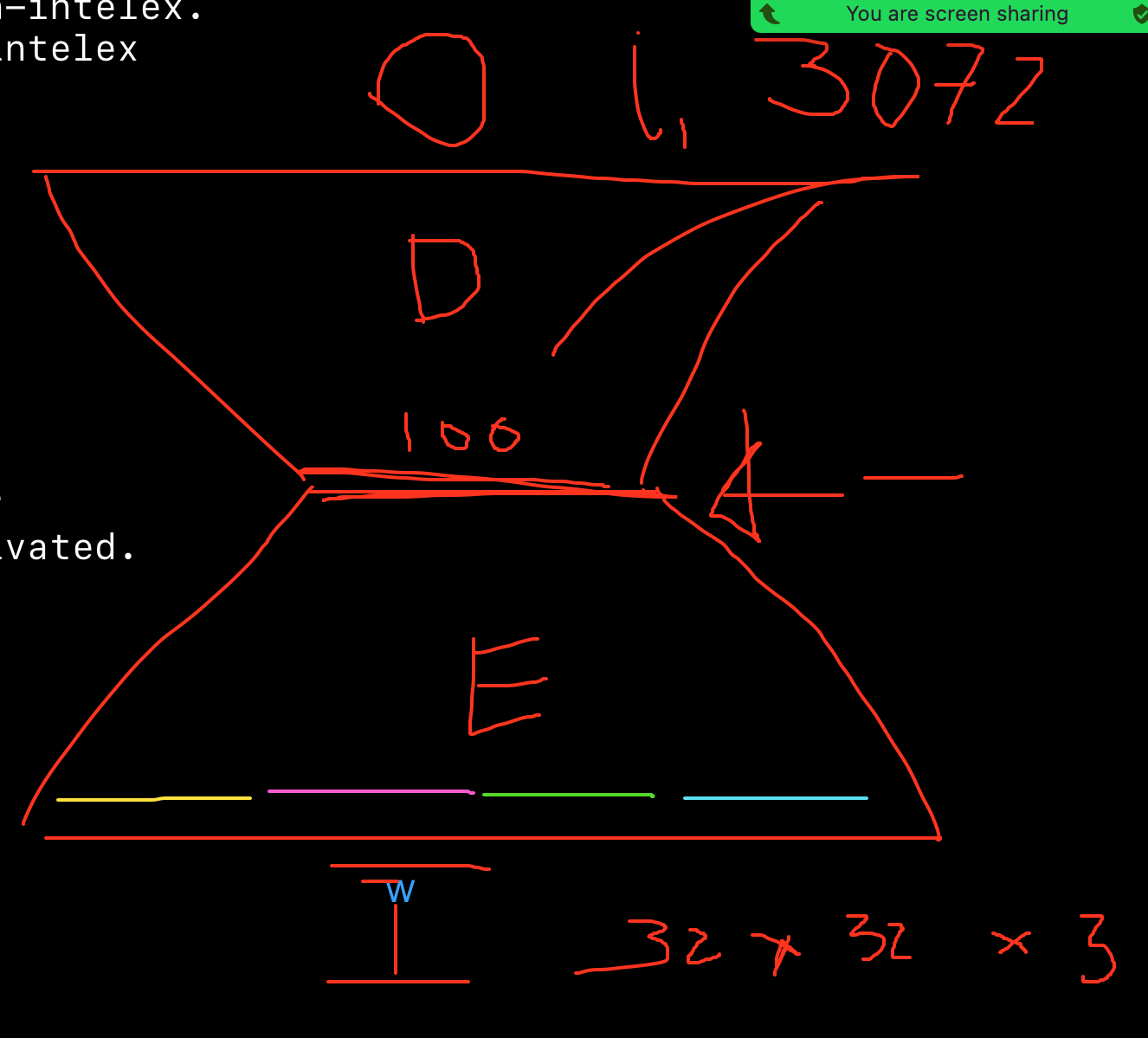Project Florence
- Project Florence is a research project on VFL
- Project Florence Literature Review
2024-03-29
Action items
- compare mlp: what's the baseline performance, with full images?
- "joint embedding"
- autoencoder
- try to baseline. have the middle layers to have 40 pixels
- how good can we get to reconstructing the images?
Can we train an autoencoder, in an federated way?
- do the full images and see how the reconstruction autoencoder goes?
- use that autoencoder to see if it can reconstruct partial images
- try to train the autoencoder in a federated way.
2024-03-20
Action Items
- compare mlp
- do max everywhere → Result: Max did not work well at all
- do avg(with-zero) everywhere
- do avg(without-zero) everywhere → Result: close to avg-with-zeros.
- random: slightly worse
- squares: slightly better
- use dropouts (with normal avg incl. zeros)
- different neurons are being dropped out randomly
- framework might handle this
max-avgnonzero doesn't work well
2024-03-07
- CNN → filtered we 3 by 3
- random, start with a bigger filter 7 by 7
- play with some functions, such as max pool
- we could do dropouts → forces the network to distribute more info → it may be more resilient
- catastrophic forgetting → learning different tasks make the NN to forget the first one
- Replay → include good examples from A when training B.
- find the necessary weights of the NN after learning the first set,
- Training the second one makes it very hard for the weights to move.
- What about we do sum?? Max??
- Sum/max in the first two layers and average in the final two?
- Or what if we don't do the average over the zeros?
2024-02-21
MLP seems to do well
conv-pool-conv-pooling may be better
abstraction of mlp can ignore the noises?
action items:
- cnn conv-pool-conv-pool
- mlp and run it for 200 epochs
- visualize scatters
2024-01-18
- Randomize each sites to have scattered pixel data (instead of quadrants)
- Autoencoder
- Pivot project?
2023-11-16

Project Impruneta
2023-10-17
2023-10-03
2023-09-22
- Approaches to vertical federated learning
- Train a network that performs well when given all 20 input parameters
- Train a network that can make good predictions even with only 10 input parameters
- Start by testing a simple approach: train on half the data from each site, average the gradients, and repeat
- Run experiments on MNIST data by splitting images in half and training on the halves separately
- Challenges
- Networks trained on half the data may not learn interactions between the two halves
- Training on single examples at a time is impractical; need to use batches for efficiency
- Experiments proposed
- Train a network on full MNIST images to get a baseline performance
- Train networks on half MNIST images to see performance drop
- Train networks by alternating between the two halves of examples, averaging the weights, to see if performance improves over training on halves alone
- The next steps if this approach works
- Try training on batches instead of single examples
- Experiment with training for multiple epochs instead of single iterations
2023-09-14
Can't we just ensemble them-?
- Federated learning and split learning
- Discuss split training versus federated learning
- Federated learning converges to a better optimization point than ensembling independently trained models
- Split learning involves training parts of the network at different sites
- Vertical partitioning of data
- Vertical partitioning of features across different sites can lead to poor individual predictors
- Training a model that combines the data in a more sophisticated way may perform better
- Focus on implementations that do not require training parts of the network at a central node
- Next steps
- Look into existing implementations of split learning and vertical partitioning
- Focus on approaches using deep learning rather than classical models
- Assume the record linkage problem is solved and focus on the training approach
- Action items
- Search for relevant papers that meet the criteria
- Filter out papers using classical models instead of neural networks
2023-08-28
- Vertical Federated Learning
- The goal is to train a model using data from multiple sites without sharing the raw data.
- Each site may have different features/columns in their data, but some overlap.
- The challenge is training parts of the network using the data available at each site.
- Record Linkage
- Matching records across sites to identify which records represent the same entity.
- Can be done using properties like name, address, phone number, and string similarity.
- Inference
- Once the model is trained, inference is done globally using all available data for an entity, not just at one site.
- Potential Conferences
- NeurIPS in May 2024 is a good target conference. Earlier deadlines may be too soon.
- Meeting Plans
- Thursdays at 2 p.m. at ISI or remotely if needed.